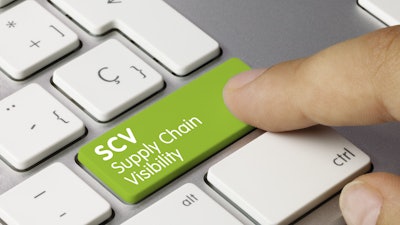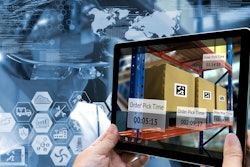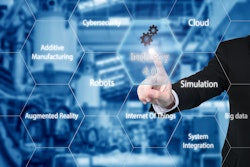
For more than 15 months now, the pandemic has been top-of-mind for much of the world’s population. From business innovators to government agencies to healthcare professionals to community leaders, this evolving Coronavirus disease (COVID-19) has impacted everyone. The situation has spotlighted inequities in medical care, amplified weaknesses in global supply chains and laid bare the data disconnects and IT inefficiencies that challenge asset visibility models in every industry.
But, its unprecedented testbed of willing populations advanced many value propositions that technology marketers had formerly been pushing in the abstract. In one giant plunge, COVID-19 kick-started digital domains that we have been hearing about for decades and forced them firmly into the mainstream.
Developments in distance learning, telemedicine, telecommuting and enterprise videoconferencing were pushed from the outlying fringes to the center of Main Street. Historians will be analyzing the business, personal and community impacts for decades to come.
Many tipping points have now been forcibly tipped and tumbled by necessity, and we’re never going back to the way it was. Not all the way back. For better or worse, multi-year runways were condensed into a matter of months by the pandemic, and there’s been (mixed) results. But, there’s also the potential of digital transformations with, in many cases, immature business and technology models take root. Imagine how long it would have taken to get 100% of any student body to even try remote learning, let alone depend on it for an entire year. It was a glimpse into the future when we weren’t ready for it. But, the potential for these platforms is now apparent and undeniable.
While some economies are opening, the global supply chain has been impacted and will need some time to heal itself.
Asset visibility, tracking and management systems have been put to the test over the last year. Some companies have gotten stronger during these unprecedented times, especially those that had already embarked on top-down automation and digital transformation strategies. Weaknesses in many supply chains have been exposed, and the contributions of frontline workers within their evolving digital landscapes has been magnified. Many companies are now ready to embrace the best of what we have seen under duress and take it to the next level.
Adjusting to workforce transformation
From the boardroom to the stockroom to the showroom to the newsroom and beyond, the picture has never been clearer. Professionals in logistics, healthcare, construction and housing, information technology and communications, energy, maintenance, retail, public safety, manufacturing and public transit have been hailed as heroes. But, many have seen new opportunities as work-from-home policies take hold both nationwide and worldwide. They may have new insights on where they would prefer to work. Or they may feel overstressed and under-appreciated like never before.
Those who remain in logistics and supply chain markets are generally eager to embrace the new technologies. Smarter logistics systems powered by commercial artificial intelligence (AI) and machine learning enhancements have been introduced to address peaked demands for medical supplies and absorb major increases in online orders and distribution. Employee empowerment that is achievable via real-time asset data collection needs to be shared, just as tomorrow’s workers need to be trained and educated throughout their careers. The digital tools that have allowed businesses to succeed over the last year can deliver unprecedented accuracy to catalyze analytics, automation, procurement processing and contribute to pandemic-inspired touchless competencies as these programs expand in the years to come. An Internet of Things (IoT)-enabled workforce can focus on customers, while contributing to the digital transformation outcomes and real-time asset visibility programs that have been fast-tracked over the last year.
Processing the enterprise data deluge
The increasing demand for operational efficiencies via a combination of mature, interrelated systems and evolutionary technologies is leading to waves of new data in unprecedented volumes. The computational and storage architectures found in university labs and supercomputing centers are making their way into the enterprise as cloud data centers are tasked with churning through data from advanced analytics and financial modeling tasks. Edge computing is no longer a concept; it’s a requirement that is driving businesses to deploy data collection and processing capabilities at the local level to feed enterprise dashboards with accurate, real-time asset inventories, location information and sensor-driven conditional awareness data.
Analytics and advanced visualization solutions were deployed at the national, state and local levels during the pandemic to monitor the wide spectrum of testing and vaccination programs. These programs offered a contrasting view of the future. Some communities churned out reliable and secure statistics. Others were overwhelmed with manual processes.
IoT, RFID, 5G, AI, enterprise resource planning (ERP), machine learning, Industry 4.0, logistics management and asset tracking advancements will supply data in compounding volumes as new post-pandemic applications come online. Industry leaders have the advantage of studying the best practices that emerged over the last year as supply chain stress tests were seemingly performed on a daily basis.
Deploying the best hardware is only part of the equation. Today’s analytics platforms and evolving enterprise performance management (EPM) software solutions are thirsty for real-time asset data. Observability is an in-demand outcome for contextual asset management applications. And, this only happens when IoT and RFID data is made available to the right enterprise systems.
Managing IoT evolution
The IoT is maturing, presenting every organization with an onramp to increased efficiencies and cost savings. But, for all the value that new 5G-enabled IoT devices and applications can bring to the market, fundamental challenges within the ecosystem are still being addressed.
Yesterday’s approaches cannot collectively scale to billions of assets when previously unconnected items are brought into the picture. Consumable everyday products are in and out of the supply chain within months. In a crisis, N95 masks and cleaning supplies went from unimaginably extreme shortages to mass distribution, trackability and delivery in a matter of months. The same paradigms stressed and taxed the world’s ability to produce and distribute vaccines, and those challenges are ongoing. But, we have seen COVID-19-inspired quick turns from companies that had some level of IoT-enabled asset data powering insights through their analytics and ERP platforms and many now want to see those efficiencies continue as economies open fully. They will expect real-time visibility from their partners too.
Nothing has changed and everything has changed. Supply chain and logistics pros will continue to align their digital transformation strategies to better plan, source, make, deliver and return their products.
A holistic asset visibility approach for the new age of analytics, AI and machine learning will be empowered by IoT and RFID working in concert with enterprise platforms to identify, track and trace assets throughout the supply chain. And, not only sensor-driven electronic assets and containers, but also unconnected everyday items too. Enterprise assets and inventory items and consumables. Overcoming the challenges of interconnectivity among hardware and software platforms that leverage and connect to IoT data sources is possible on a massive scale. Many companies addressed the digital transformation bridge as a matter of survival during the pandemic. Going back to a disconnected environment of systems, applications, platforms and assets that can’t deliver real-time visibility at the enterprise level is not an option. Aligning enterprise architectures with RFID and sensor-based hardware and software solutions to bring unconnected items into redefined hybrid IoT structures is the order of the day.
A clearer view
Old manual processes simply can’t keep up with the most recent evolution of the industry exacerbated by the demand peaks we have seen during the past 12-18 months. Data is crucial to develop more data-driven processes and apply near real-time insights. Not using available technology and data to guide processes is leaving money on the table.
A collapse in demand during the early stages of all the global shutdowns was immediately followed by a period of frenzied activity as people who were forced to stay home ordered huge quantities of consumer goods. Service providers are struggling to keep up with the demand, which is greater than the capacity. That in turn results in delays and higher costs.
While several potential issues create disruption, the cause isn’t as important as the work done both before and after an event occurs to mitigate its effect.
To provide maximum value, you need visibility. It’s a critical ingredient allowing everyone in the supply chain to access accurate information in near-real time and use it to improve service. For logistics providers, time is of the essence.
The big competitive differentiators will not be just dependent on price, but speed and quality of service.



















